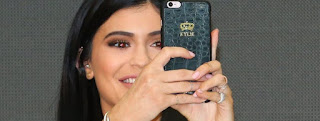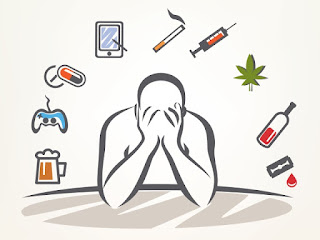It’s been awhile since I put my name on something I wrote, mostly because there’s really been only one one thing to write about. But other life goes on, so ...
Last time out, I wrote about how I had recently come to the realization that, much as I chafed at the designation, given the 21st century dilution of the term and the relaxed admission standards that allow anyone with an attitude and an audience into the club, I was — am — for better or worse, a pundit.
In my defense, just being able to write that sentence should qualify me.
But punditry, I have even more recently learned, is small potatoes (chicken feed, chump change, yesterday’s news) compared to the title to which anyone with any interest in the power of persuasion today should aspire.
I want to be an influencer.
Really. It’s a job. I just found out. Some pundit.
Influencer is such a legitimate thing that Forbes Magazine has initiated a list of the Top 10 Influencers for 2018 in a variety of categories. It’s starting with Beauty, Fitness and Home, capitalized I assume for influence.
Influencer is such a legitimate thing that Forbes Magazine has initiated a list of the Top 10 Influencers for 2018 in a variety of categories. It’s starting with Beauty, Fitness and Home, capitalized I assume for influence.
Apparently one qualifies for this list by telling tens of thousands — even millions — of people who follow you on social media what beauty products you prefer, the type of fitness regimens, supplements, food, clothes you prefer or let them in on the type of furniture or decor you like to surround yourself with when relaxing at “home.” Then a lot of those people go out and buy the stuff. Companies pay you for your creative messaging.
It’s kinda like being a shill. In fact, it’s exactly like being a shill. It just pays a lot better, if you’re, you know, influential.
If you sense me being a bit flippant and sarcastic about this discovery it may at least in part be because I am not just a little bit envious of these people who have discovered a way to earn a good living by sitting home, posting photos and writing blurbs on Instagram, Facebook, YouTube and other social media sites and being paid by companies whose product they promote. You don’t even have to use it. All you really need is a ton of followers who believe you and apparently await your every posting to find out what they should really like, then buy it.
For one thing, this says a lot about buying habits today, when so much shopping is done on the internet, with no opportunity to check out the merchandise firsthand. Well, heck, if Randi Jo Cutie Pie says those are cool candles or neat boots or dynamite hair products, they must be. Look, she’s got a million and a half followers.
The Forbes list was heavily female and mostly millennials, which would suggest that a male in his seventh decade might look for another line of work. It’s also prominently featured on Instagram, which I thought was mostly for sharing cellphone photos. So, on second thought, I’m going to stick to punditry, where I don’t have to worry about competing with Kylie Jenner or Cardi B.
Yet.
— Maybe it’s just me, but … if I’m going to get the news that I’m about to shake off the coils of my current mortal construct and rejoin the Greater Consciousness in some other form real soon, I want a living, breathing doctor standing next to my bed delivering the diagnosis as compassionately as possible, not a streaming image of someone, presumably a doctor, on a screen on a machine wheeled into my hospital room.
Ernest Quintana didn’t get that personal treatment at Kaiser Permanente Hospital in Fremont, Calif. Instead, with his 33-year-old granddaughter standing by his bedside, the 78-year-old, who had been admitted to the hospital for the third time in 15 days because of difficulty breathing, heard the headset-wearing image on the screen say there was serious lung damage. “Unfortunately, there’s nothing we can treat very effectively,” the image said. He also said giving his “patient” morphine might help with pain, but would make breathing more difficult. He topped off his “On Demand” consultation by responding to a question about hospice care thusly: “I don’t know if he’s going to get home.”
The grand daughter was mortified, as were Quintana’s wife and daughter, who had briefly left the hospital to go home and shower. They complained to the hospital, which was semi-apologetic. Quintana died two days later.
The grand daughter was mortified, as were Quintana’s wife and daughter, who had briefly left the hospital to go home and shower. They complained to the hospital, which was semi-apologetic. Quintana died two days later.
They call it telemedicine and it presumably has its place, but a spokesperson for the AMA said delivering a death sentence electronically should be a doctor’s “last choice.”
Don’t they teach this stuff in med school?
— Speaking of insensitivity, maybe it’s just me, but the State of Virginia would appear to have a serious race issue. The governor, Ralph Northam, is desperately trying to repair his image after a racist yearbook photo of him was published and he subsequently admitted to wearing blackface in his youth. The state’s attorney general admitted likewise. Both men are white. But get this, mere days after her husband pledged to devote the rest of his term to racial equity, his wife, Pam, leading a tour of the governor’s mansion, handed raw, prickly cotton to 13-and-14-year-old black pages and asked them, “Can you imagine being an enslaved person and having to pick this all day?”
No, they couldn’t and no, they weren’t happy with the hands-on history lesson. Neither were their parents. A former middle school teacher, Northam said she does the same with all the history tours she leads.
Maybe they need to re-evaluate that lesson in First Lady school.
rjgaydos@gmail.com


